Stop Killing Your Peperomia: A No-Nonsense Guide for Plant Parents
I’ve been around plants my whole life, from massive commercial greenhouses to the jungle I’ve cultivated in my own living room. I’ve seen trends come and go, but Peperomia? They’re always in style. It’s a huge family of plants with an incredible variety of leaves, and their compact size makes them perfect for shelves and desks.
In this article
They’re often slapped with an “easy care” sticker, but let’s be honest, that can be a bit of a lie. So many people bring one home only to watch it slowly give up, and the reason is almost always the same. Success with these guys isn’t about some complicated secret—it’s about one big mindset shift.
Here’s the deal: Peperomia are not your typical leafy houseplants. Most of them are semi-succulent, and many grow on trees in the wild. This means they hold water in their plump leaves and have very fine, shallow root systems that absolutely hate being wet for too long. Once you really get that, caring for them becomes a breeze. So, let’s dive into what actually matters.
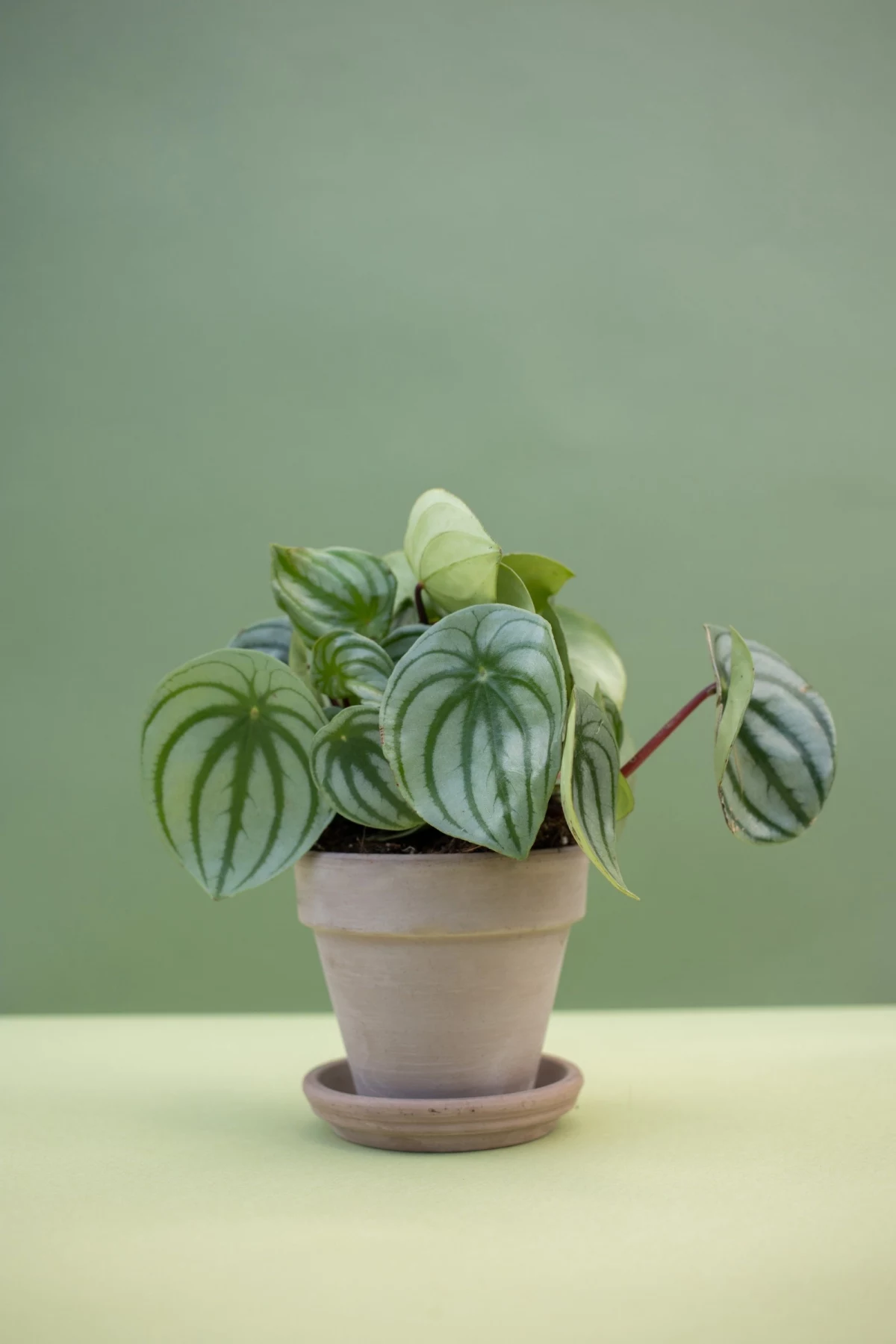
By the way, if you’re a total beginner, don’t just grab any one you see. For a much more forgiving start, look for the classic Baby Rubber Plant, a Ripple Peperomia, or a Watermelon Peperomia. They tend to handle beginner mistakes a little more gracefully.
The One Thing You HAVE to Understand
To grow any plant well, you need to think about where it came from. Peperomia grow in tropical places, sure, but not on the forest floor in a bunch of rich, wet mud. This is the number one mistake people make. They treat it like a thirsty fern, and it’s a fast track to failure.
It’s Basically a Succulent
Just look at a Baby Rubber Plant. The leaves are thick and fleshy, and the stems are pretty sturdy. That’s because they’re built like little camels, storing water to get through dry spells. This is awesome, but it also means they will literally rot from the inside out if they get too much water. The plant’s cells get waterlogged, burst, and decay sets in. This is why you always hear people talking about a “drench and dry” watering method—the plant is designed for a good drink followed by a definite dry-out period.
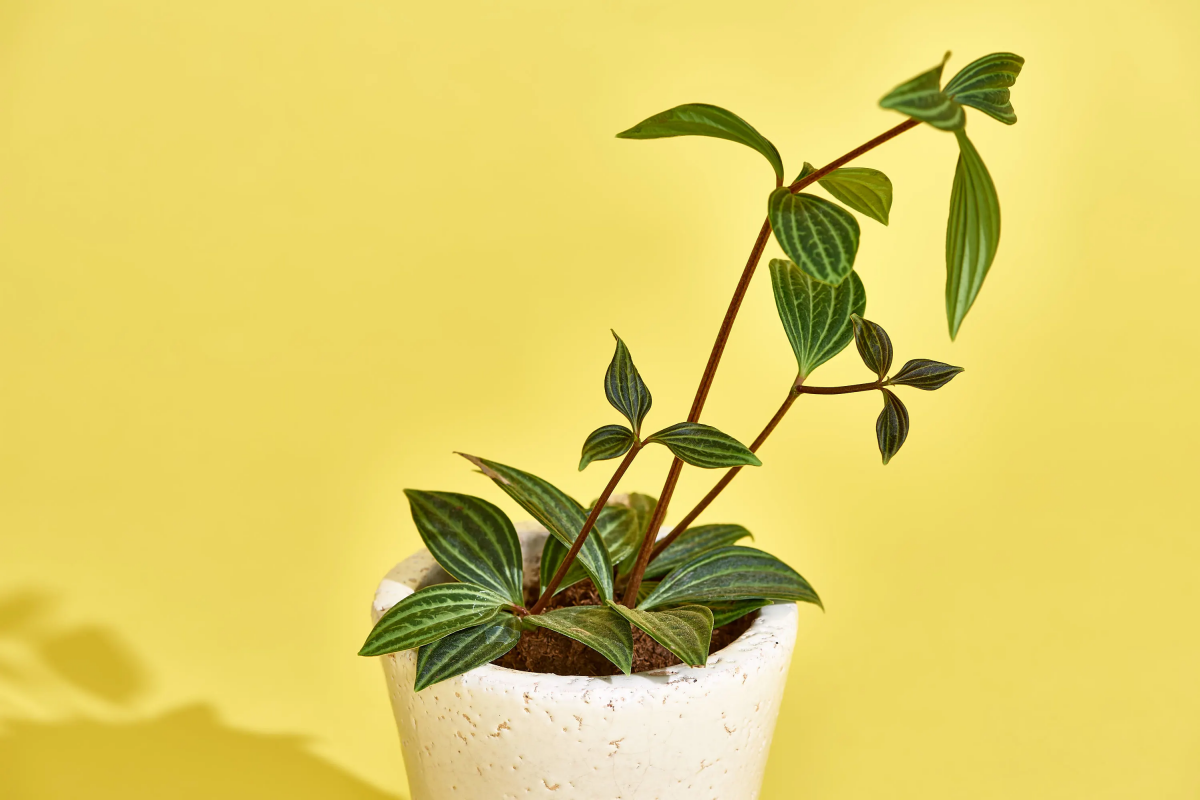
Roots That Need to Breathe
In nature, many Peperomia are epiphytes, which is a fancy word for a plant that grows on another plant, like in the crook of a tree branch. Their roots are there to anchor them and soak up moisture from rain and bits of bark, not to dig deep into dense soil. They need air. When you shove one into a bag of standard, heavy potting mix, you’re basically putting a plastic bag over its head. The soil stays soggy, the roots can’t breathe, and root rot is almost guaranteed.
Getting the Soil Right (This is CRUCIAL)
At any decent nursery, the pros will tell you the soil a Peperomia comes in is usually just for shipping. It’s often heavy and designed to hold water so it survives the truck ride. In your home, that soil is a death sentence. Making your own mix is the single best thing you can do for your plant.
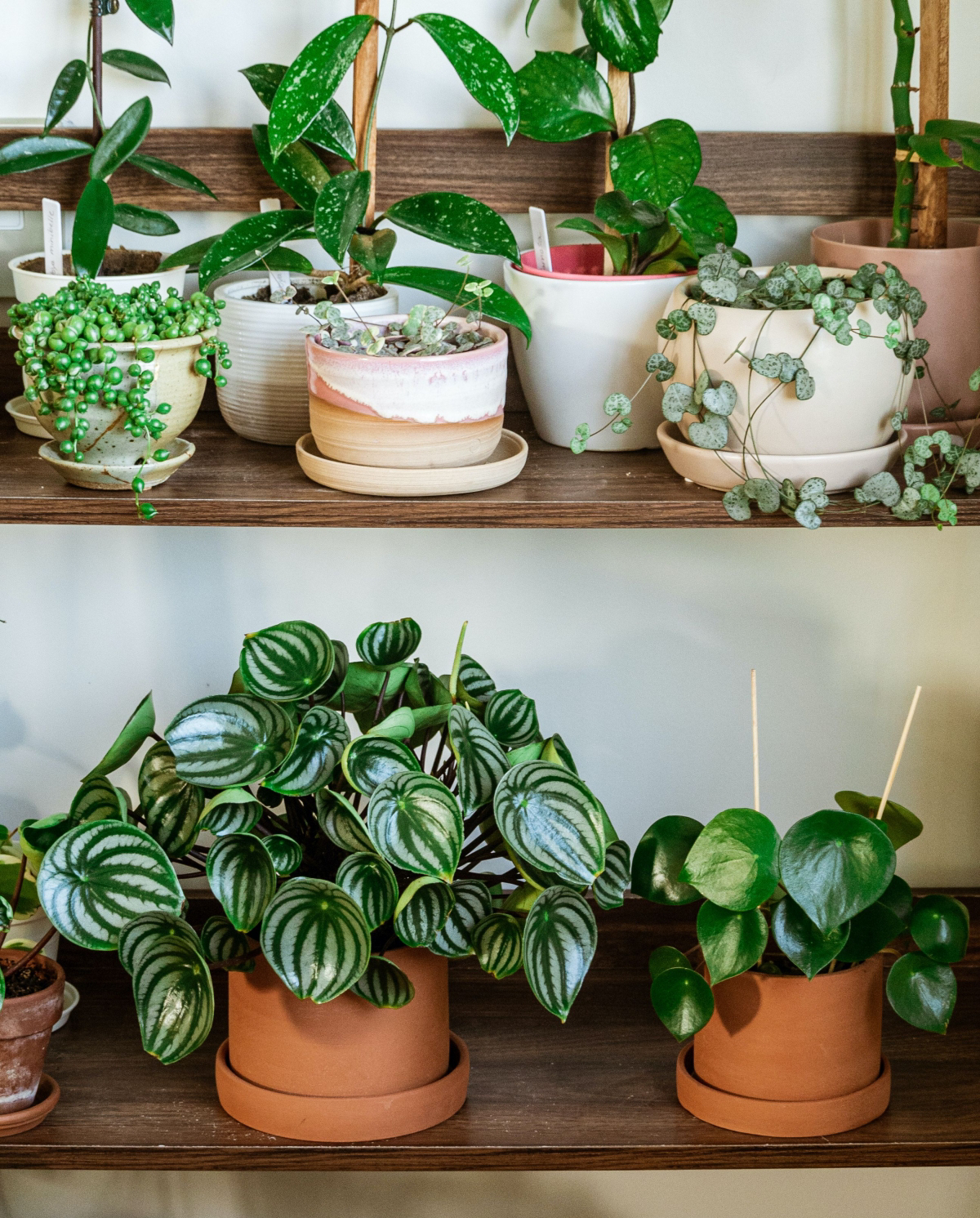
The Perfect Peperomia Soil Recipe
Forget that all-purpose indoor potting mix. On its own, it’s just too dense. You need to create an airy, chunky, well-draining mix. This is my go-to formula that has never failed me:
- 1 Part Coco Coir or Peat Moss: This is your base. It holds onto a little moisture. I prefer coco coir; it’s more sustainable and doesn’t get as hydrophobic as peat when it dries out completely.
- 1 Part Perlite or Pumice: This is non-negotiable. It creates tiny air pockets throughout the soil, letting roots breathe and water drain away. Pumice is a bit heavier, so it won’t float to the top like perlite sometimes does.
- 1 Part Fine-Grade Orchid Bark: This adds that chunky structure that mimics their natural home. It creates larger air gaps and prevents the soil from ever getting compacted.
Mix these three parts together thoroughly. When you grab a handful, it should feel light and fluffy, and it should fall apart easily. It should never feel like dense, muddy soil.
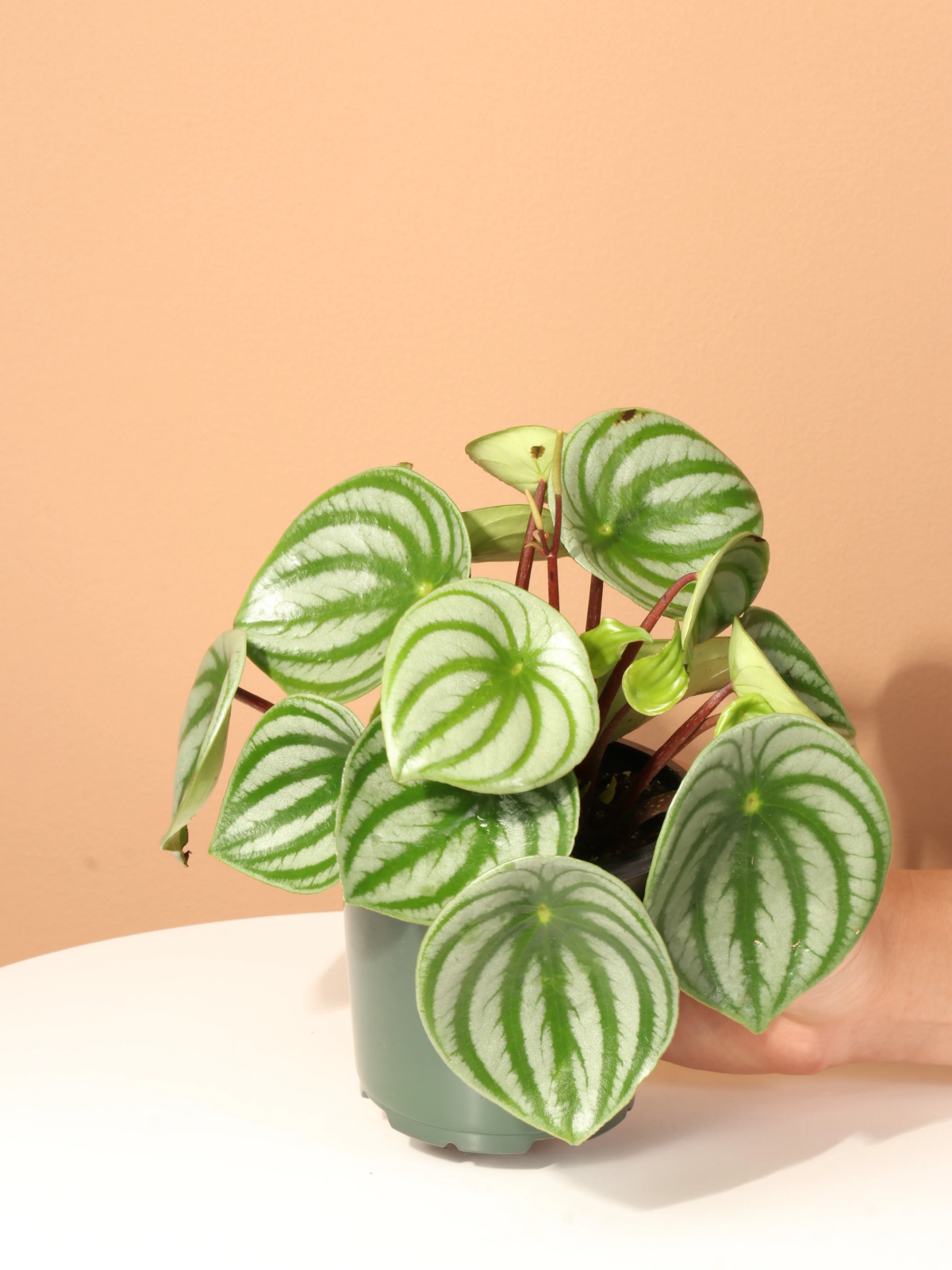
A quick thought on budget: People sometimes get scared off by custom mixes, thinking it’s expensive. You’ll have to buy three separate bags of ingredients, which might cost you $20-$30 total. But here’s the thing: you’ll get a TON of soil, enough for many, many plants. It’s way cheaper in the long run than buying those small, overpriced bags of pre-made “aroid mix.” Oh, and a lesser-known trick: for the fine-grade bark, check the reptile bedding section at a pet store. It’s often the exact same stuff as orchid bark but can be way cheaper.
Choosing the Perfect Pot for Your Plant
Your pot choice is just as critical as the soil. Let’s break down the two things that matter most: what it’s made of and how big it is.
For the material, I always push beginners toward unglazed terracotta pots. The clay is porous, meaning it breathes. It actually pulls excess moisture out of the soil and lets it evaporate, giving you a fantastic buffer against overwatering. Plastic or glazed ceramic pots are fine, but they don’t breathe, so they hold moisture for much longer. They’re great if you live in a very dry place or if you’re a confident waterer, but they are far less forgiving. No matter what you choose, it MUST have a drainage hole. I’m not kidding. A plant in a pot with no drainage is a dead plant waiting to happen.
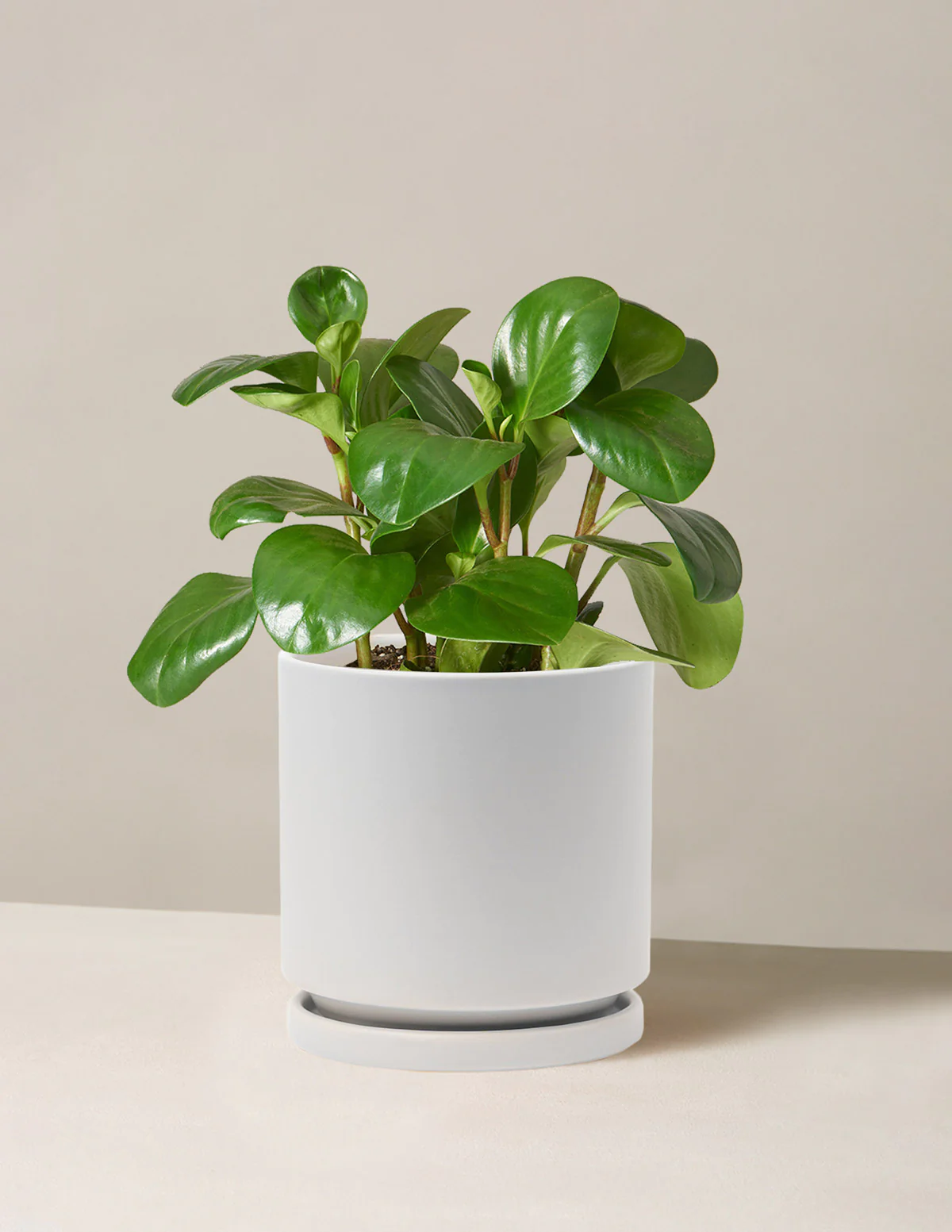
I learned this the hard way. I once killed a gorgeous Watermelon Peperomia because I put it in a beautiful decorative pot that had no hole. I figured I’d just be careful. Two weeks later, it was a stinky, swampy mess. The roots were complete mush. Never again!
And then there’s size. Peperomia have tiny root systems and genuinely prefer to be snug in their pots. Planting a small Peperomia in a huge pot is a classic (and fatal) mistake. All that extra soil holds water that the tiny roots can’t possibly drink, so it just sits there, staying wet for weeks and rotting the plant from the bottom up. So, listen carefully: choose a pot that is only about 1 inch wider in diameter than the plant’s current root ball. If the root ball is 3 inches across, get a 4-inch pot. Do not get the 6-inch pot you think it can “grow into.” That’s how you kill it.
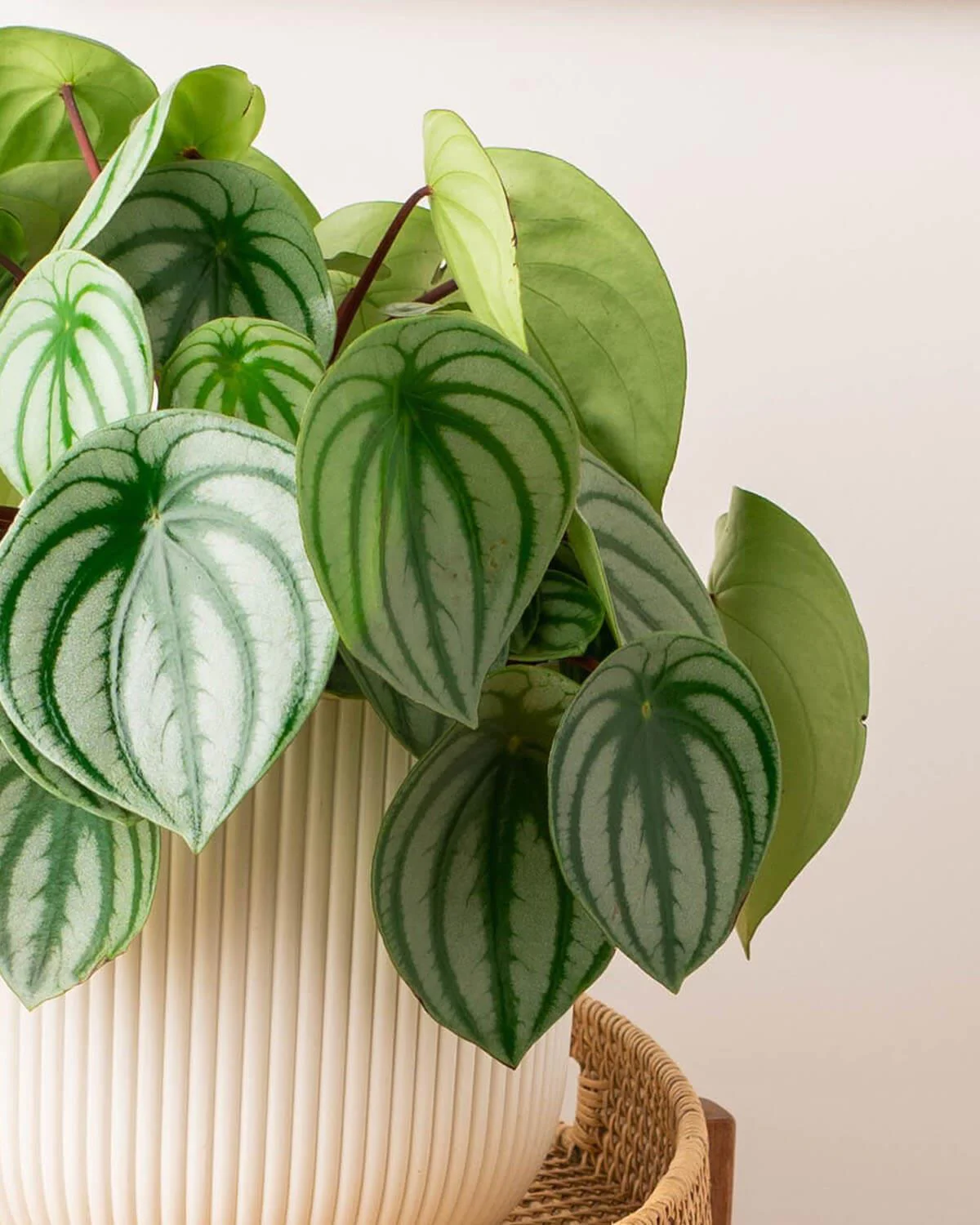
How to Actually Water This Thing
If you nailed the soil and the pot, watering becomes so much simpler. But please, throw away any idea of a schedule. Watering “every Saturday” is a terrible plan because it doesn’t account for sunny weeks, cloudy weeks, or changes in humidity. You have to learn to water with your finger, not the calendar.
The Drench and Dry Method
This is the way. When it’s time to water, be thorough. Take the plant to the sink and give it a good soak until water pours out of the drainage hole. This makes sure all the roots get a chance to drink and it also helps flush out any mineral buildup from your tap water. Then—and this is the most important part—let it drain completely. Don’t ever let it sit in a saucer full of water. After that, leave it alone until the soil is almost totally dry.
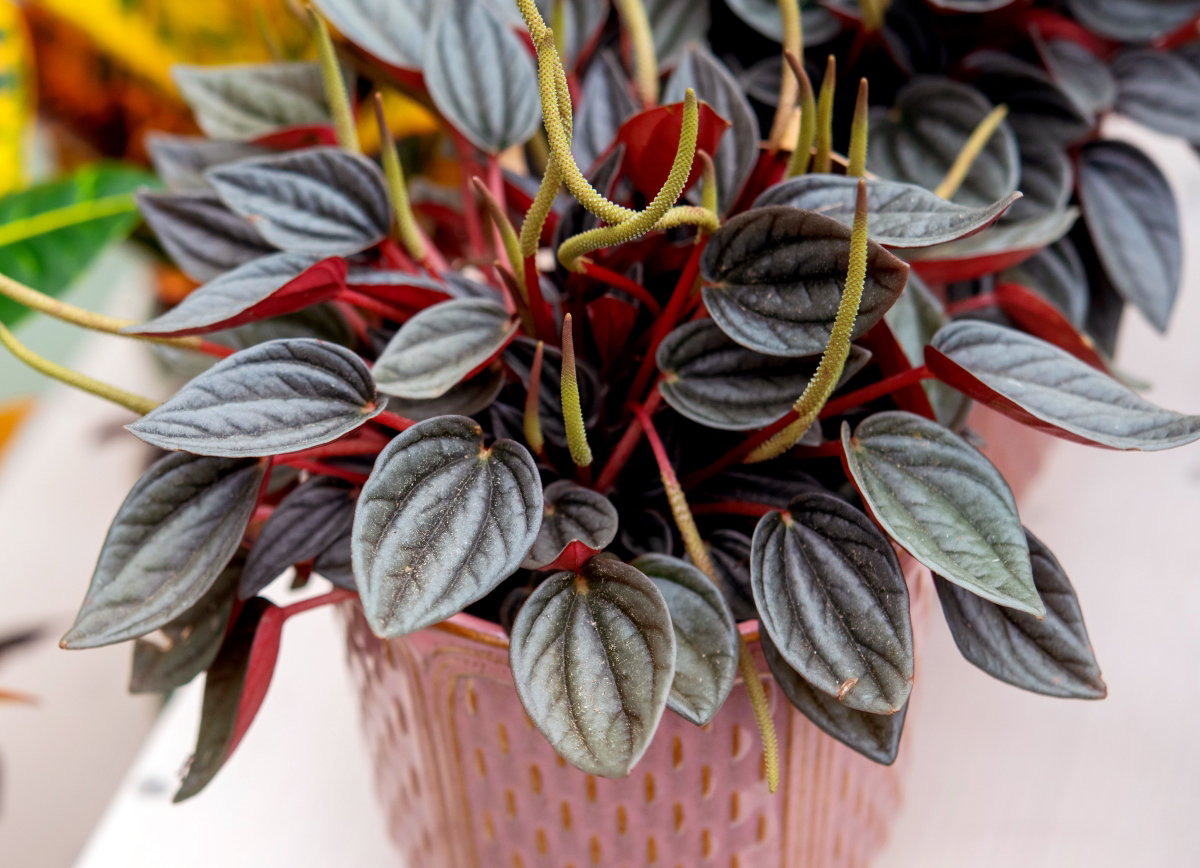
So… How Do I Know It’s Dry?
Don’t just poke the top inch of soil. It can be bone dry on top and still soggy at the bottom. Here are a few foolproof ways to check:
- The Finger Test: The classic. Stick your index finger into the soil right up to your second knuckle. If you feel even a hint of coolness or moisture, wait. If it feels dusty and dry, it’s time to water.
- The Chopstick Trick: A wooden skewer or chopstick works like a cake tester. Gently push it down into the soil (avoiding the main stem). Pull it out after a minute. If it comes out with damp soil stuck to it, wait. If it comes out clean and dry, go ahead and water.
- The Weight Test: This is my favorite method, but it takes a little practice. Pick up your plant right after you’ve watered it and feel how heavy it is. Then, pick it up every few days. You’ll quickly learn the significant difference in weight between a watered plant and a thirsty one.
In a bright spot, a good airy mix should feel dry enough to water again in about 5 to 10 days, but this can vary wildly. The golden rule is: when in doubt, wait another day. A Peperomia will forgive you for being a little thirsty. It will not forgive you for being soggy.
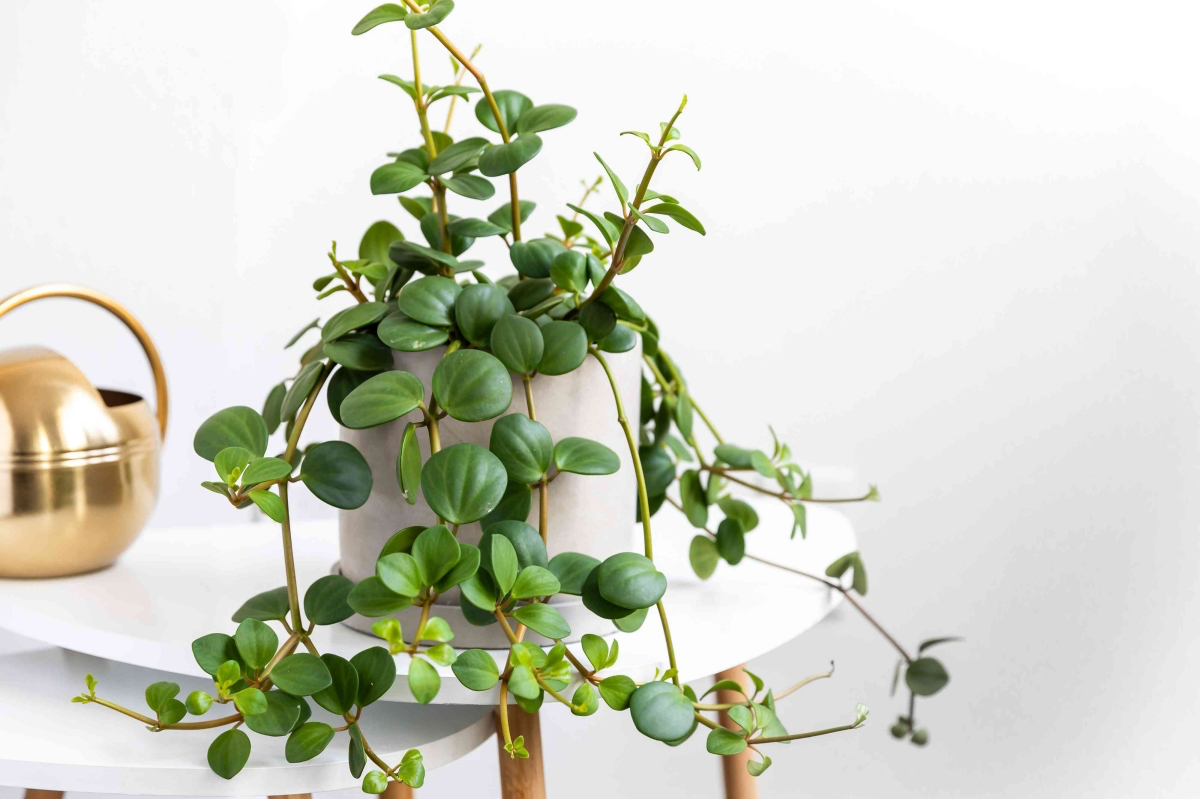
Light, Heat, and Where You Live
Where you put your plant matters. The amount of light it gets is directly tied to how much water it uses.
Peperomia love bright, indirect light. Think of a spot near a window where it can see the sky but isn’t getting blasted by direct sunbeams for hours. An east-facing window is often perfect. A few feet back from a south or west window also works. Not enough light will make it look sad and “leggy,” with long, stretched-out stems. Too much direct sun will scorch the leaves, leaving them bleached or with crispy brown spots.
As for temperature, if you’re comfortable, they’re comfortable. They do best in normal household temperatures, somewhere between 65°F and 80°F. Just keep them away from cold, drafty windows in the winter and blasting heat vents. They handle average humidity pretty well, but if your home is super dry, you might see some crispy leaf edges. Grouping it with other plants or using a small humidifier can help. The thinner-leaved varieties, like the Ripple Peperomia, will appreciate a bit more humidity than their waxy-leaved cousins.
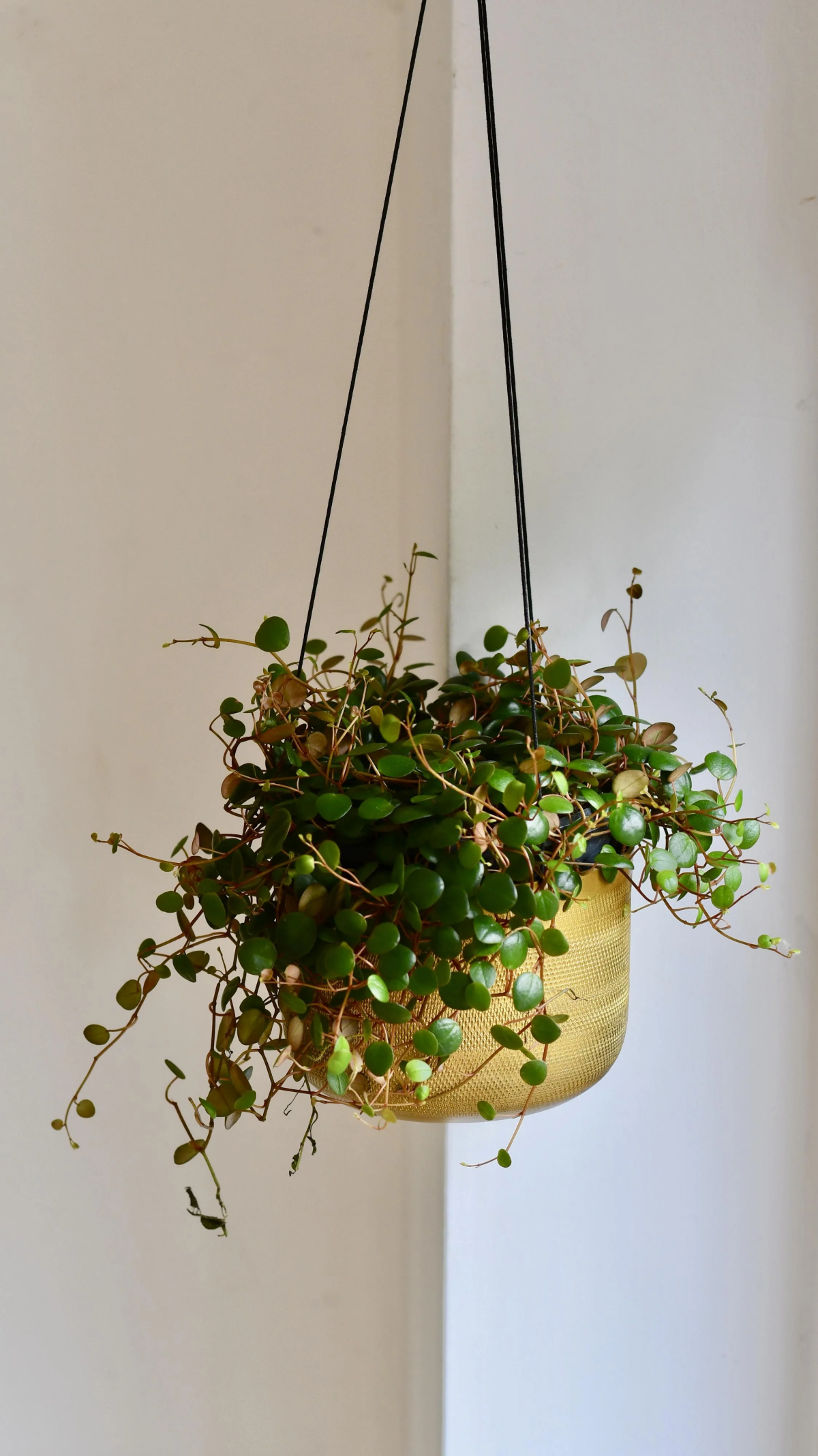
Keeping It Happy: Food, Haircuts, and Making More
Once you’ve got the basics down, the rest is easy. These aren’t greedy plants.
Feeding Your Peperomia
Because they’re slow growers, they don’t need much food. Over-fertilizing can easily burn their fine roots. Think of it like trying to feed a baby a full-sized steak—it’s just too much. During the spring and summer, use a balanced liquid fertilizer diluted to half or even a quarter of the strength the bottle recommends. I feed mine about once a month during the growing season. In the fall and winter, don’t fertilize at all. The plant is resting.
Pruning and Propagation
You really only need to prune to control the shape or snip off any leggy stems. It actually encourages the plant to get bushier! Use clean, sharp scissors and cut just above a leaf node. And hey, don’t throw those cuttings away!
Propagating Peperomia is super rewarding. You can stick a stem cutting (with a few leaves on it) in a glass of water and watch the roots grow, or you can plant it directly in some moist soil. I find that cuttings started in soil develop stronger roots. For many types, like the Watermelon or Ripple varieties, you can even propagate them from a single leaf. Just cut a healthy leaf with a bit of its stalk, stick the stalk in moist soil, and in a few weeks or months, tiny new plants will pop up.

Troubleshooting: A Plant Parent’s First-Aid Kit
Even the best of us run into issues. Here’s a quick guide to what your plant might be telling you.
- If leaves are yellowing and the soil is damp: You’re overwatering. This is the #1 problem. Let it dry out completely.
- If the plant suddenly drops a bunch of healthy-looking leaves: It probably got hit with a cold draft. Move it somewhere more stable.
- If you see white, cottony fluff tucked into nooks and crannies: You’ve got mealybugs. Dab them with a cotton swab dipped in rubbing alcohol.
- If there are mushy black stems at the soil line: This is advanced root rot. Time for emergency surgery. Take the plant out of the pot, wash the soil off the roots, and use clean scissors to cut off every single bit of black, brown, soft, or stringy root. You’re looking for firm, whitish or light tan roots. If there are any healthy ones left, repot in fresh, dry, airy soil and don’t water it for at least a week. Good luck.
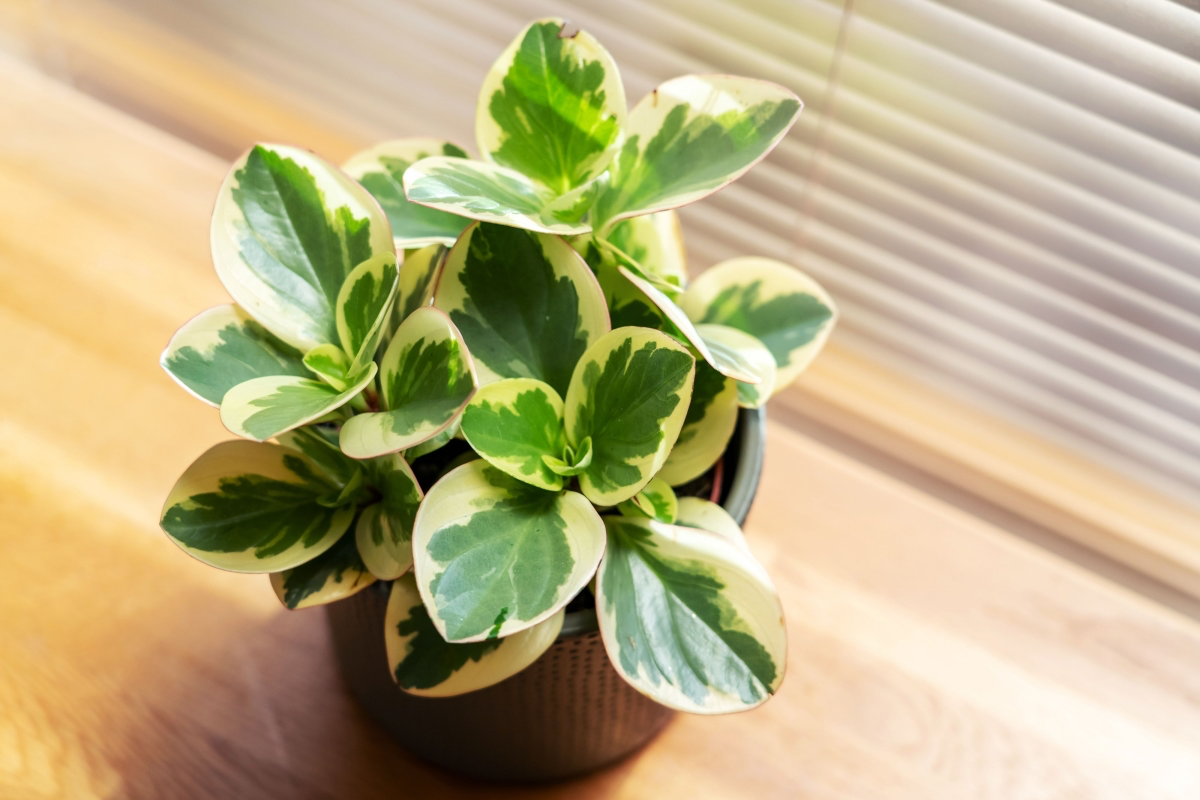
A Final Word on Safety
Good news! Most common Peperomia are considered non-toxic to cats and dogs. That said, it’s always a good idea to keep plants out of reach of pets and kids, since munching on any houseplant can cause a mild tummy ache.
Ultimately, all this advice is a starting point. Your home is unique. The best thing you can do is just watch your plant. A yellowing leaf or a limp stem is just its way of talking to you. Learning to read those signs is what turns a beginner into a pro. You’ve got this!
Galerie d’inspiration
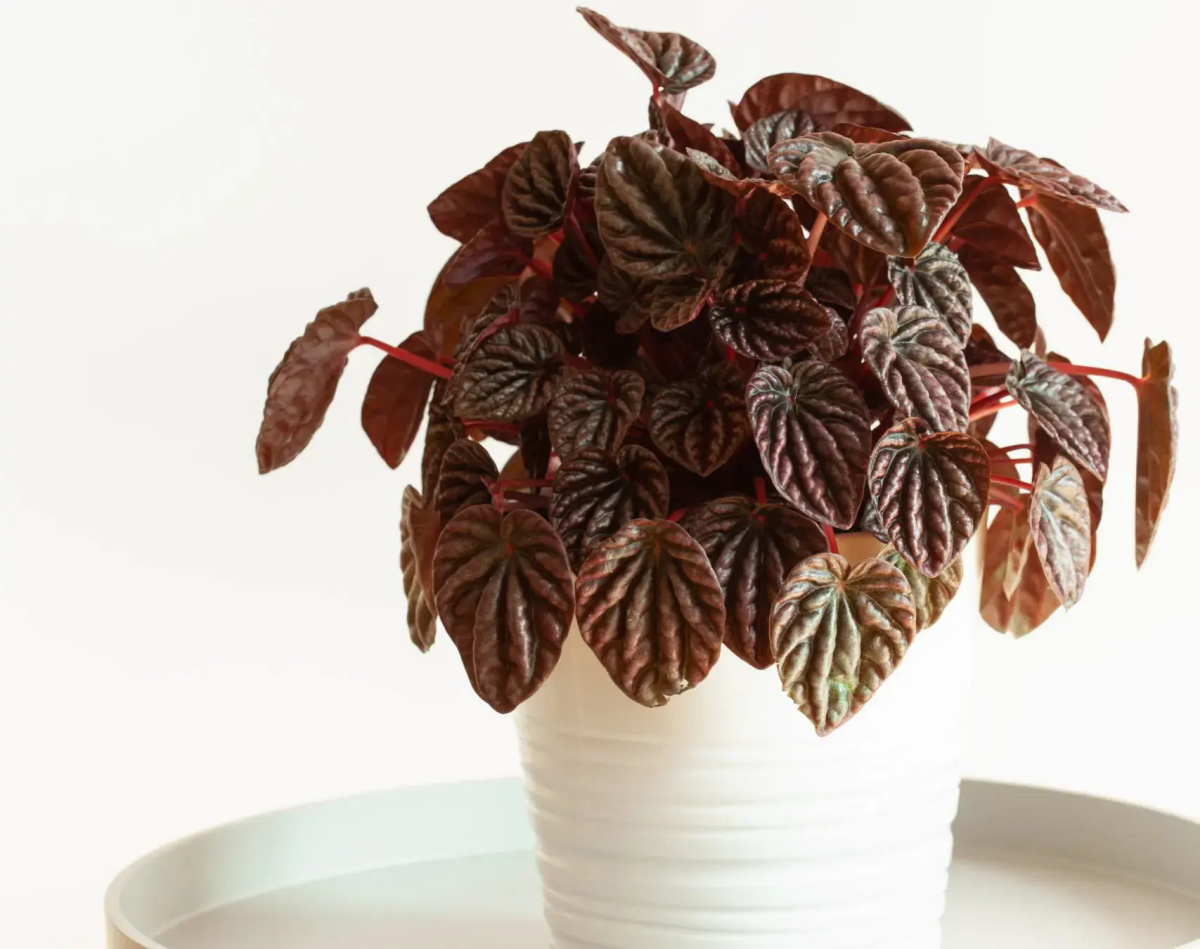
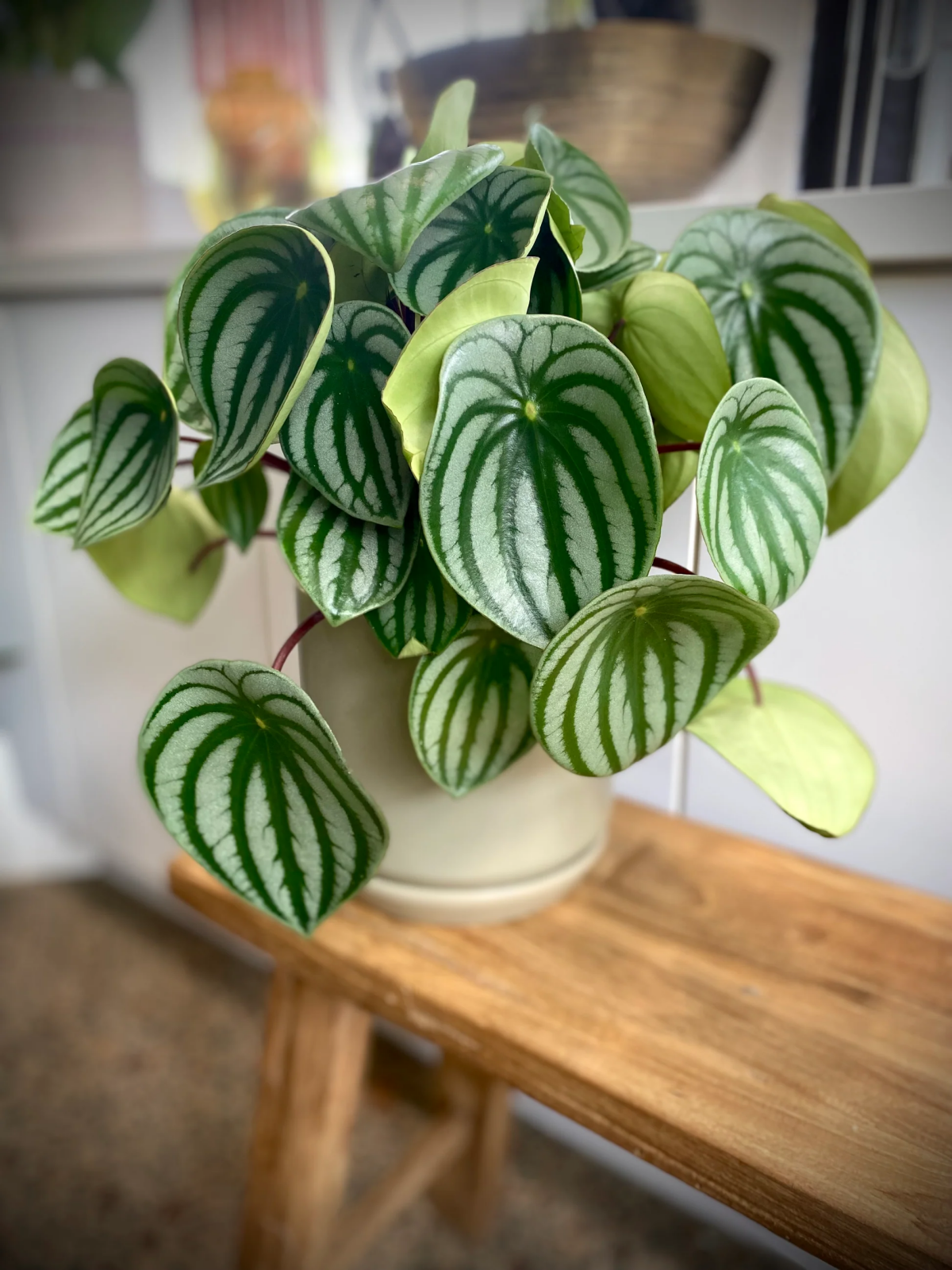
Why is my Peperomia getting all long and stretched out?
That’s a classic case of etiolation, a plant’s cry for more light! Your Peperomia is literally reaching for the sun. While they don’t want harsh, direct rays, they thrive in bright, indirect light. Move it closer to an east-facing window or a spot that gets consistent, filtered brightness. To fix the current legginess, don’t be afraid to prune the long stems back. This will encourage the plant to grow bushier and fuller from its base.
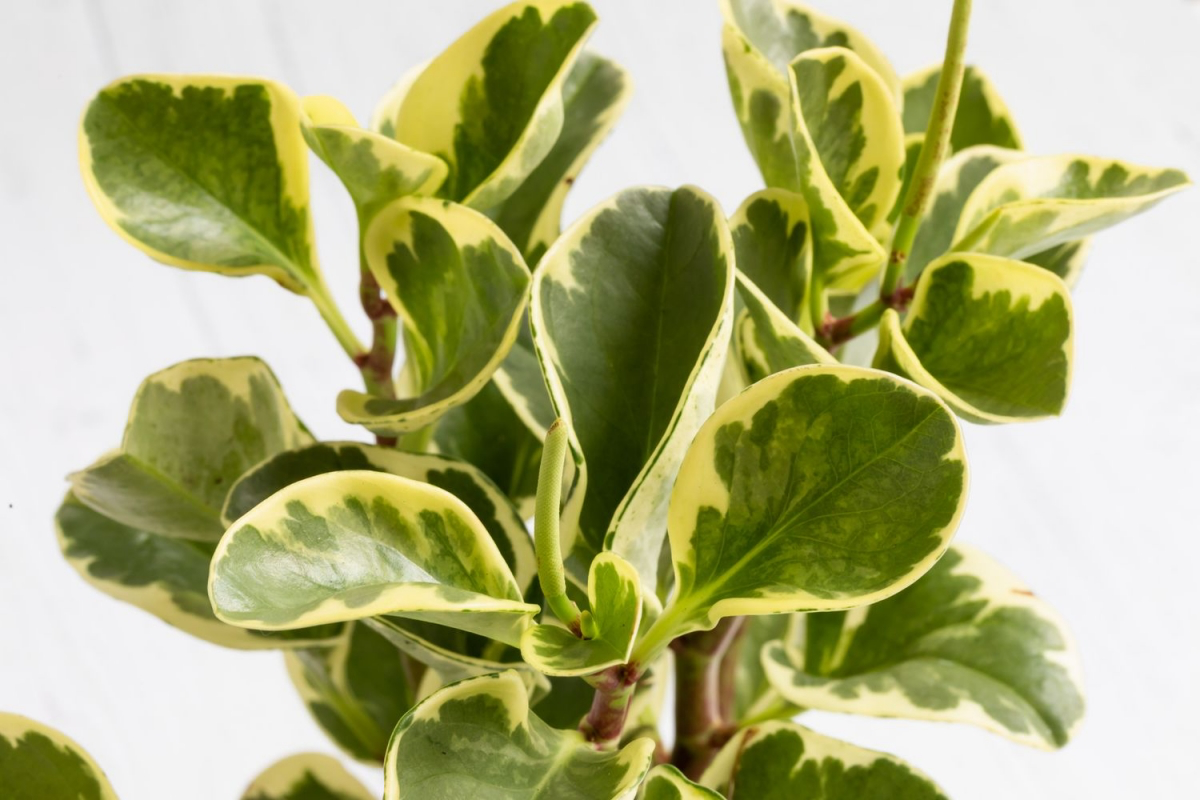
There are over 1,500 known species of Peperomia, making it one of the largest genera of houseplants.
This incredible diversity is why you can find a Peperomia for almost any aesthetic. From the alien-like, crinkled leaves of the ‘Ripple’ types to the trailing, coin-shaped foliage of the ‘String of Turtles’ (Peperomia prostrata), there’s a whole world to explore beyond the classic Baby Rubber Plant. It’s a collector’s dream in a compact, manageable package.
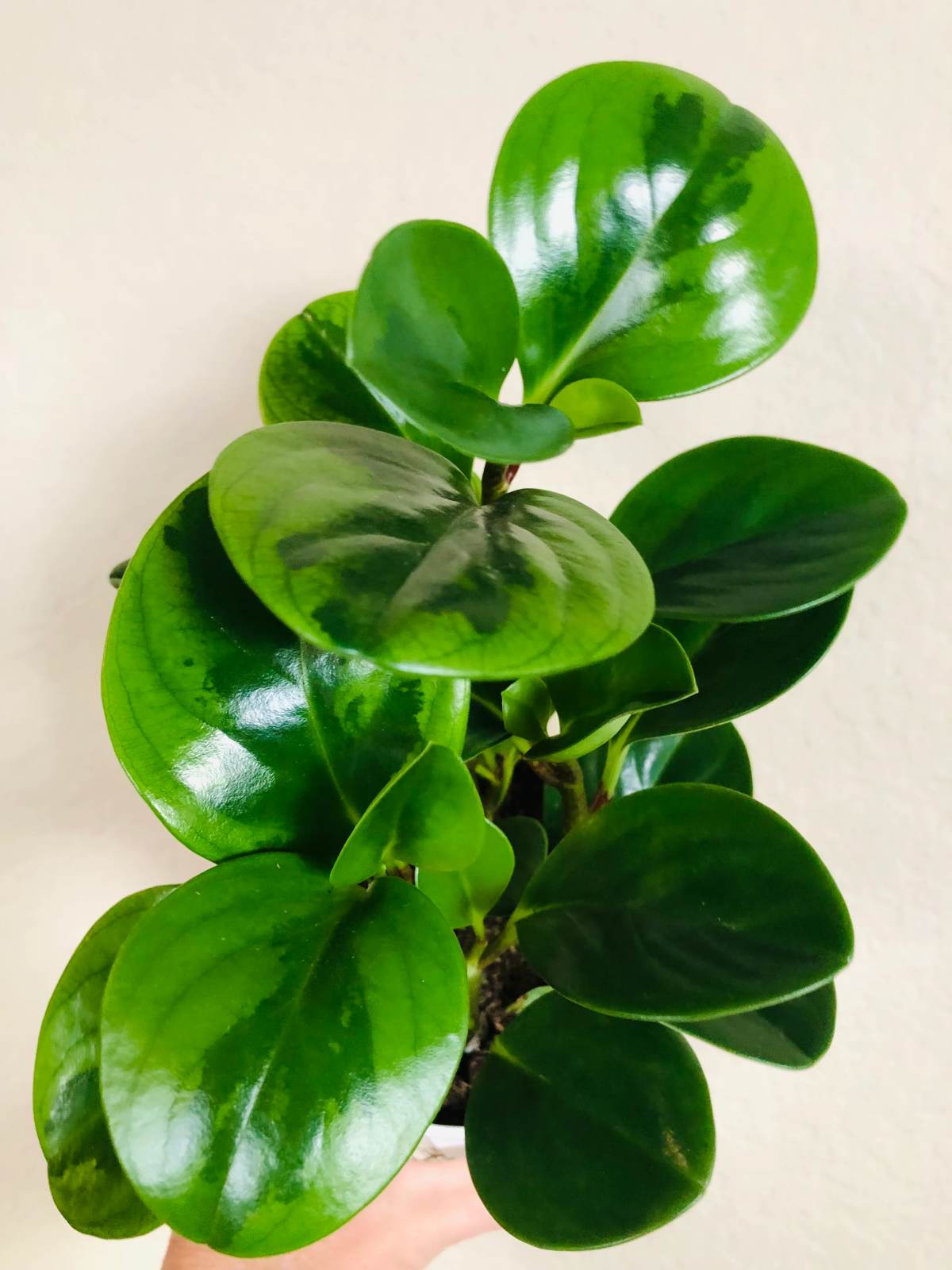
The right pot matters more than you think.
Terracotta: This porous clay wicks moisture away from the soil, allowing the roots to dry out faster and more evenly. It’s the safest bet for anyone who tends to overwater, acting as a buffer against root rot.
Glazed Ceramic or Plastic: These non-porous pots hold moisture for much longer. They can be beautiful, but you must be disciplined. Water only when the soil is almost completely dry to the touch, as there’s no evaporative help from the pot itself.
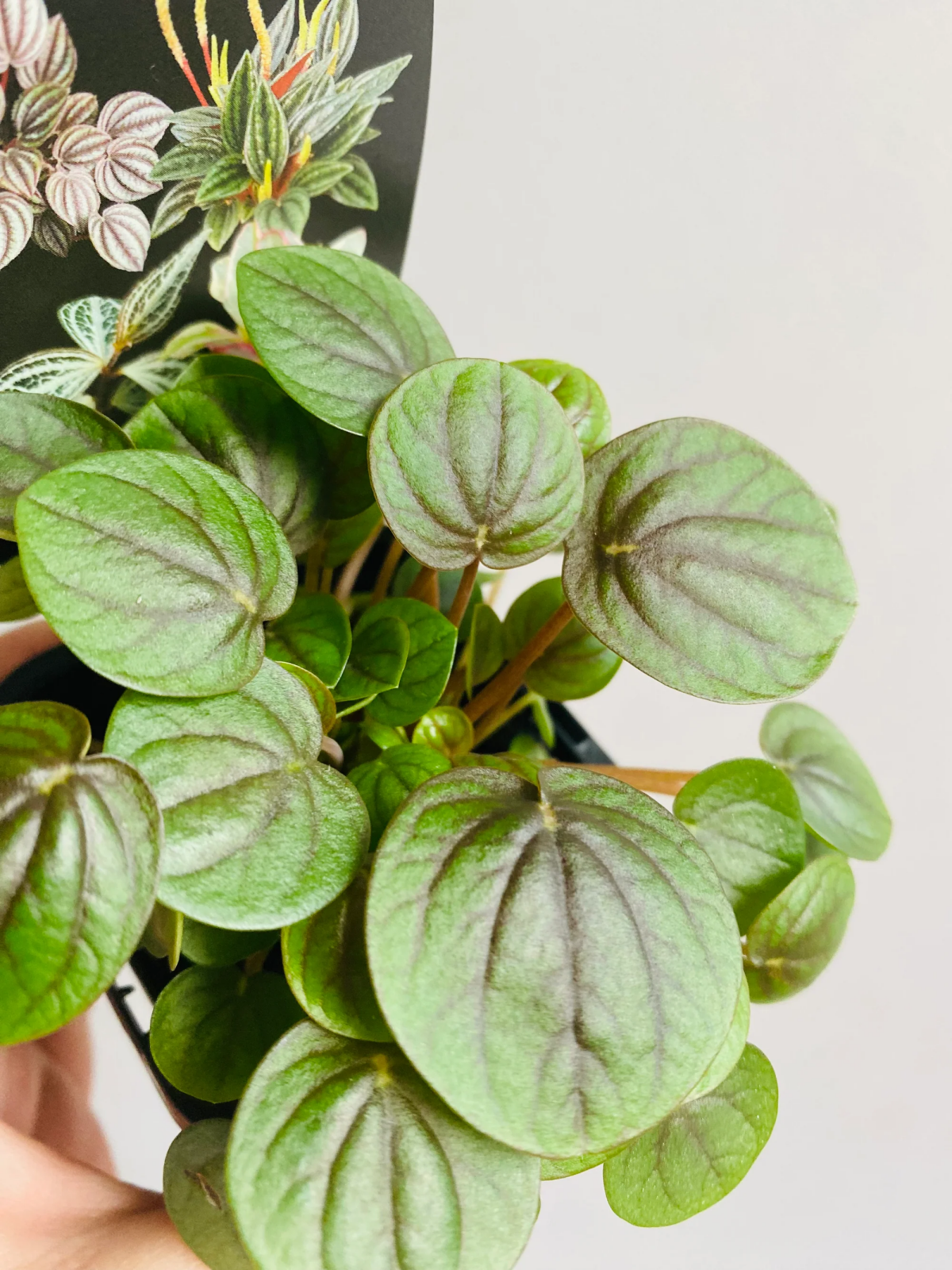
Create your own perfect Peperomia potting mix; it’s easier than it sounds and your plant will thank you for it. The goal is maximum aeration to protect those delicate roots. Try this simple, effective recipe:
- One part standard indoor potting soil
- One part perlite for drainage
- One part orchid bark for chunky air pockets
The secret? That chunky mix mimics the debris-filled tree crevices where many Peperomia grow in the wild.
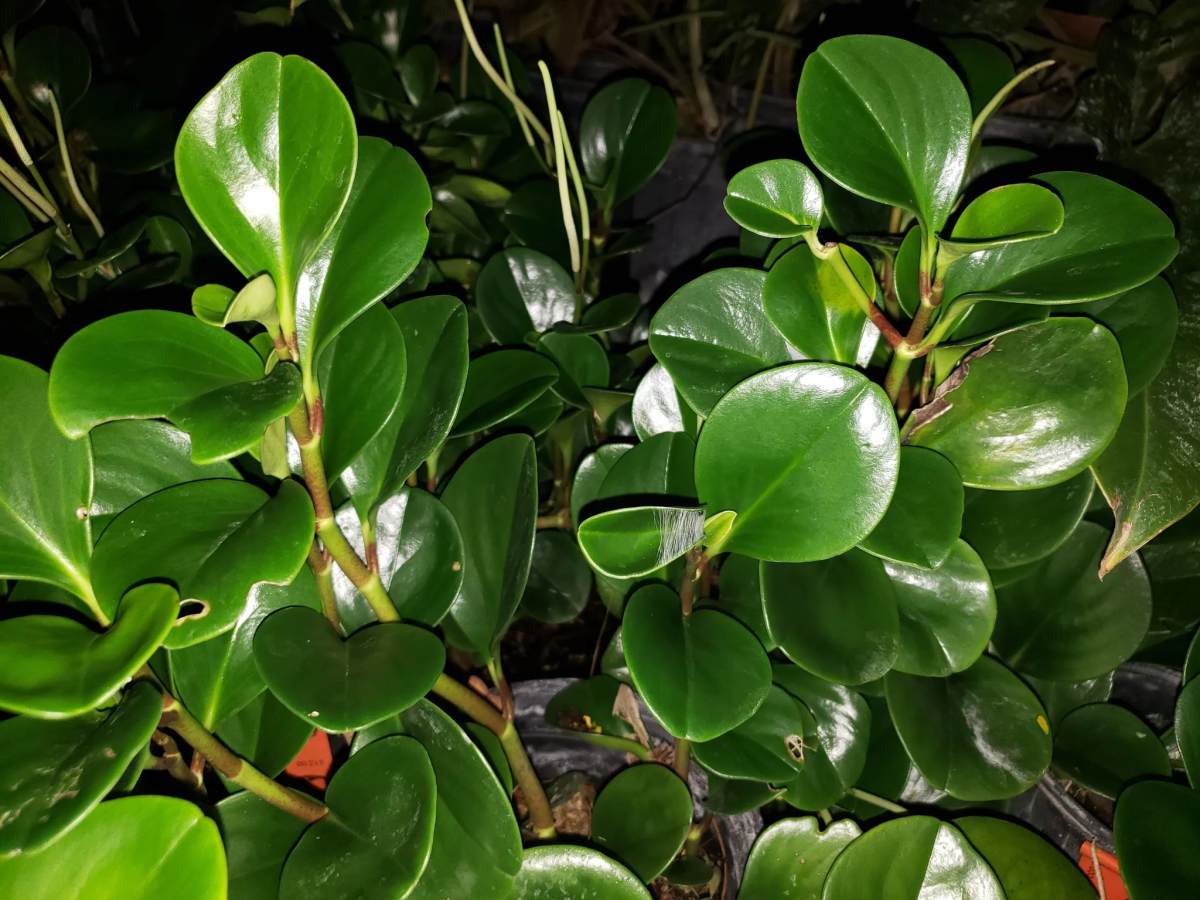
A single Peperomia leaf can grow an entire new plant.
It’s true! Most Peperomias are incredibly easy to propagate. Simply snip off a healthy leaf with a bit of its stem (petiole) attached. You can place it in a glass of water until roots form, or plant it directly into moist soil. In a few weeks, you’ll see a tiny new baby plant emerge from the base. It’s a fantastic way to multiply your collection or share with friends.
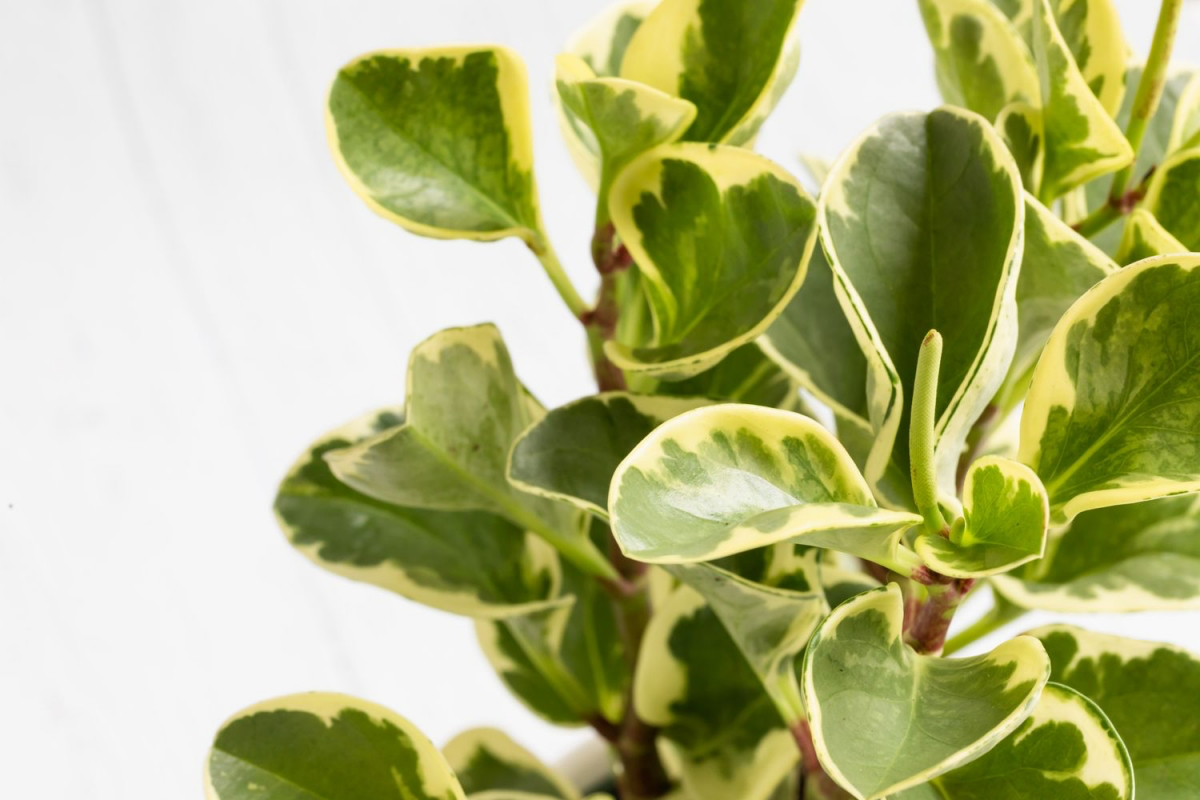
A key benefit for pet owners: According to the ASPCA, the vast majority of plants in the Peperomia genus are non-toxic to cats and dogs. This makes them a go-to choice for creating a lush, green space without worrying about your furry friends. You can place a Watermelon Peperomia on a low table with peace of mind.
Looking for that ‘wow’ factor on a shelf? Create a Peperomia tableau by grouping different textures and growth habits. The contrast is stunning.










